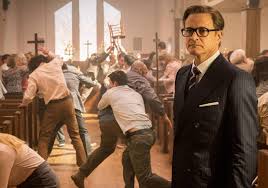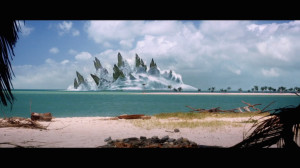KING, QUEEN AND PAWNS: Movie reviews of Kingsman: The Secret Service, Song of the Sea and Timbuktu by Howard Casner
Posted: February 18, 2015 | Author: Donald | Filed under: Uncategorized | Tags: Abderrahmane Sissako, Abel Jefri, Brendon Gleeson, Colin Firth, Dave Gibbons, David Rawle, Fionnula Flannagan, Jane Goldman, Kessen Tall, Kingsman: The Secret Service, Mark Hamill, Mark Millar, Mark Strong, Matthew Vaughn, Michael Caine, Samuel L. Jackson, Sofia Boutella, Song of the Sea, Taron Egerton, Timbuktu, Tomm Moore, Will Collins | 1,046 Comments »First, a word from our sponsors. Ever wonder what a reader for a contest or agency thinks when he reads your screenplay? Check out my new e-book published on Amazon: Rantings and Ravings of a Screenplay Reader, including my series of essays, What I Learned Reading for Contests This Year, and my film reviews of 2013. Only $2.99. http://ow.ly/xN31r
and check out my Script Consultation Services: http://ow.ly/HPxKE
Warning: SPOILERS
 Kingsman: The Secret Service, the latest entry in a comic book franchise, this one with an espionage theme, is, in many ways, an impressive and handsomely made movie.
Kingsman: The Secret Service, the latest entry in a comic book franchise, this one with an espionage theme, is, in many ways, an impressive and handsomely made movie.
From a technical perspective, it’s incredibly well done with the best costumes, sets, and music money can buy. It doesn’t stint and there is nothing in this film that is an old piece of tat or is cheap as chips.
The acting is also first rate, raiding the cupboards as it does for the actors who are left who managed to not appear in The Lord of the Rings or The Harry Potter series.
And it has some beautifully well staged and directed second unit scenes of carefully, even wittily, choreographed episodes of extreme violence.
In many ways, those who like these sort of studio type tent pole films will probably find it hard to carp at anything they see.
So why did I find the whole thing dispiriting and extremely depressing?
OF GODS AND MONSTERS: Moview Reviews of Godzilla and X-Men: Days of Future Past by Howard Casner
Posted: May 29, 2014 | Author: Donald | Filed under: Uncategorized | Tags: Aaron Taylor-Johnson, Alexander Desplat, Bryan Cranston, Bryan Singer, Dave Callaham, David Strathairn, Elizabeth Olson, Evan Peters, Gareth Edwards, Godzilla, Hugh jackman, Ian McKellen, Jane Goldman, Jennifer Lawrence, Juliette Binoche, Ken Watanabe, Matthew Vaughn, Max Borenstein, Michael Fassbender, Nicholas Hoult, Patrick Stewart, Peter Dinklage, Peter McAvoy, Sally Hawkins, Simon Kinberg, X-Men: Days of Future Past | 1,646 Comments » All the while, while watching Godzilla, the mega monster movie epic written by Max Borenstein from a story by Dave Callaham and directed by Gareth Edwards, all I could think is “where is Mystery Science Theater 3000 when you need them?”
All the while, while watching Godzilla, the mega monster movie epic written by Max Borenstein from a story by Dave Callaham and directed by Gareth Edwards, all I could think is “where is Mystery Science Theater 3000 when you need them?”
(I remember this one moment, see, and this female MOTU, okay, she like passes over the central character, Ford Brody, and you can like see its testicular like sac carrying its eggs and everything, and, and I so wanted Crow, Tom Servo or Gypsy to call out, “Please don’t teabag me, please don’t teabag me”). Read the rest of this entry »
Movie Review of The Woman in Black by Howard Casner
Posted: October 19, 2012 | Author: Donald | Filed under: Uncategorized | Tags: Ciaran Hinds, Daniel Radcliffe, Hammer, James Watkins, Jane Goldman, Janet McTeer, The Woman in Black | 6 Comments »When I was a mere barefoot boy with cheek, every Saturday my local theater had a special matinee for kids and we saw either a Japanese monster film (Godzilla, et. al.); a sword and sandal story inspired by Greek and Roman myth or characters (often starring Hercules, whether he was actually the original character in the Italian film or not, that’s how it got translated); or a Hammer horror film. I have fond memories of that period and the few things I learned as a virginal pre-teen: never remove small miniaturized people from remote islands; never fight sword wielding skeletons; and perhaps, most important of all, never, ever go to a small, remote village in England. If you do, you will likely never return alive.
Yes, it seems that beneath the quiet exterior or tea and crumpets and bland food, in every small and quaint British village exists an evil that no mere mortal can conquer (or if you do, it will just come back again some day—isn’t it fortunate for studios that their desire to create franchises intersects so beautifully with the way evil works in the world). This view of rural England has become an institution for such a long time now, it has even earned its own filmic satire in Simon Pegg’s Hot Fuzz. And true to form, The Woman in Black, the new Hammer horror film written by Jane Goldman and directed by James Watkins, revels in this gothic tradition.
The Woman in Black is star Daniel Radcliffe’s attempt to play adult characters and leave his iconic role of Harry Potter behind. From the look at things, he couldn’t find a screenplay he liked enough that required full frontal, so he settled for this one. And he does an excellent job of playing the father of a young boy (complete with five o’clock shadow to make sure you know he’s more than old enough to shave—Radcliffe, not the young boy); a father in deep, but deeply buried (this is England after all), anguish over the death of his wife. And Radcliffe has a quiet intensity that works very well in a movie that is made up of many moments of quiet intensity.
However, it must be said that in spite of an excellent supporting cast made up of a group of actors who look like they’ve always lived in a village that has yet to install electricity, as well as solid performances by the better known Ciaran Hinds and Janet McTeer (as the noblesse oblige upper crustaceans), the real star of the movie is a fantastical house located far away from everything that can only be reached by a road that is only available at certain times of the day due to tides (it’s so evil, no other building is willing to be near it, I guess). Often seen from above and far away, it’s located on an island of malevolence asea in a marsh of grayness. It’s one of those locations (as in the movie The Haunting) that is a character unto itself, and often a more fully developed one than any other character in the film. And believe me, one look at this architectural monstrosity (in more ways than one) and you’re screaming at Radcliffe, are you crazy, flee, you idiot, flee for your life.
The basic story revolves around something happening to the children in this village. They’re all killing themselves. It seems to have something to do with the owner of the house, but when Radcliffe arrives in his role as solicitor in order to wrap up lose ends now that the house’s owner is dead, the villagers all turn they’re anger on him. It’s unclear why, and this does lead to the main issue with the movie. It’s very scary at times, often terrifying, but it never really holds together. The basic idea of the curse is great, but the execution of it in the screenplay doesn’t always feel as if makes enough sense.
Once Radcliffe gets to the house he’s suppose to get to work, but exactly what he’s supposed to do is never quite clear. In fact, he never really does much of anything (the movie begins with a warning from his employer that this is his last chance at keeping his job and with the work ethic he shows, no wonder). But Radcliffe quickly becomes far too busy being distracted (by creaking doors, mysterious sounds and a vague and distant image of a woman in black) to make a remote dint in the piles of junk that surround him in the house.
But the one issue that really prevents the plot from coming together as it should is that Radcliffe’s character, for some reason that is not satisfactorily explained (at least for me), never asks why everybody hates him; why the children are all dieing; and what everybody is afraid of. Because of this, when he finds himself ensconced in the house, the story has no place to go because there is no rhyme or reason as to what is going on. Instead, what the audience gets is an arbitrary series of jump and go boo moments that, indeed, yes, are very jump and go boo and more than make the hair on your arms stand on end. But at the same time, this section also becomes a tad repetitious and has little forward momentum.
And because the back story doesn’t seem to have been fully thought out (why exactly is the Woman in Black the woman in black), the ending, which is a bit shocking, doesn’t resolve anything in the story and actually says that everything that came before was pointless.
But still, for what it is, it definitely does what it needs to do: scare the bejesus out of you. And it teaches another important lesson. The more things change (Hammer is now under new management and has just recently go back to producing films), the more things stay the same: never, ever go to a small village in England or you may never come back alive. It’s just common sense.











